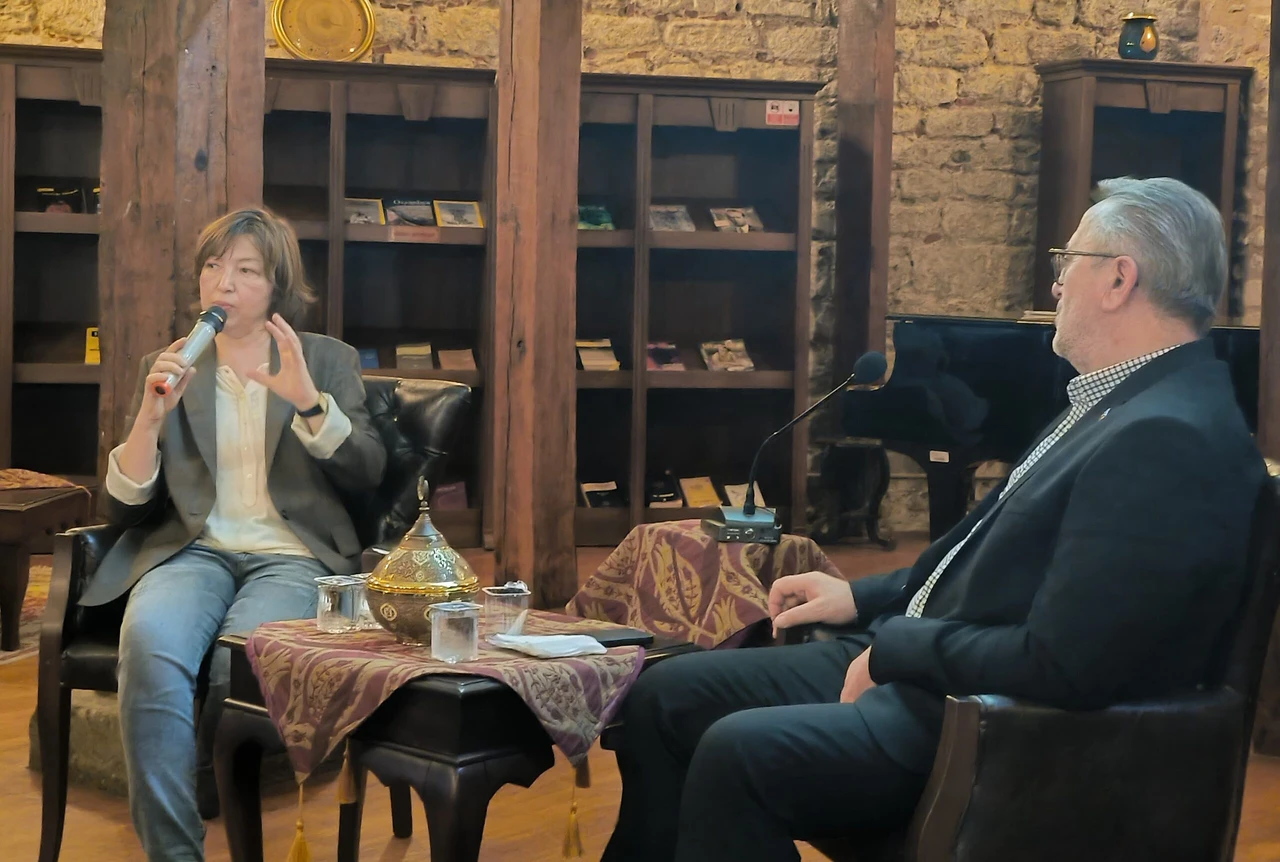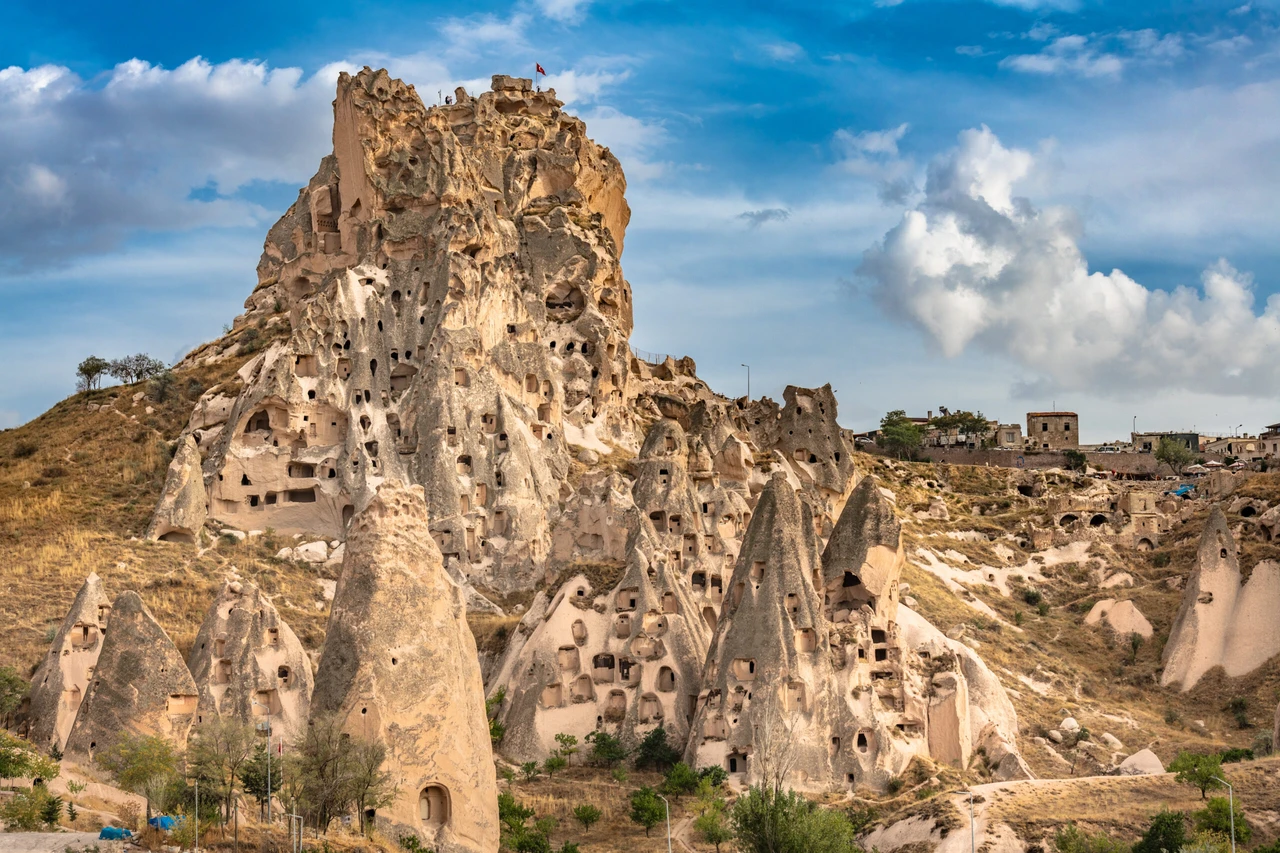Rediscovering Ottoman clockmaking: Each masterpiece took 9 years
 Mechanical clock repairer Sule Gurbuz speaks at commemoration event for Ahmet Eflaki Dede, known as the "master of Ottoman clockmaking," organized by Istanbul Provincial Directorate of Culture and Tourism, Istanbul, Türkiye, August 7, 2024. (AA Photo)
Mechanical clock repairer Sule Gurbuz speaks at commemoration event for Ahmet Eflaki Dede, known as the "master of Ottoman clockmaking," organized by Istanbul Provincial Directorate of Culture and Tourism, Istanbul, Türkiye, August 7, 2024. (AA Photo)
The Istanbul Directorate of Culture and Tourism held an event to honor Ahmet Eflaki Dede – renowned as the master of Ottoman clockmaking on Aug.7.
The event took place at the Ahmet Hamdi Tanpinar Literature Museum Library in the Fatih Alay Pavilion.
Istanbul Provincial Director of Culture and Tourism Coskun Yilmaz highlighted the significance of time and clocks in history.
He emphasized the need to reflect on “the relationship between time and civilization and how time was perceived in Ottoman and Islamic societies.”
“The methods used in our past civilizations to measure time are worth examining,” Yilmaz noted.
Mechanical clock repairer Sule Gurbuz provided insights into the evolution of time measurement in the Ottoman Empire.
She explained early methods relied on non-mechanical tools like sundials and hourglasses.
“The oldest sundial in Istanbul, made by Ali Kuscu in 1470, still has faint traces remaining,” she said.
“Sundials measured time more accurately because standard measurements were crucial for property transactions.”
Gurbuz emphasized that all Turkish mechanical clockmakers were originally muvakkits, experts who set times for prayers.
“These muvakkits were educated in madrasas, studied science, and passed rigorous exams,” she said.
“In Istanbul, muvakkits were present in major mosques until 1952. The earliest known Turkish mechanical clockmaker is Hamza Bali, who produced his work in 1580, although we haven’t seen his work. The oldest clock we have seen is by Seyh Dede, displayed in Topkapi Palace.”
Gurbuz described the intricate process of making mechanical clocks in the past, which required the collaboration of different guilds.
Unlike in the West, where a clockmaker would assemble parts made by others, Ottoman clockmakers like Ahmet Eflaki Dede managed the entire process.
“This made each clock a unique ‘work of art,'” she said, adding that “Ahmet Eflaki Dede produced only 11 clocks in his lifetime, with each taking nine years to complete.”
The most fascinating aspect of Eflaki Dede’s story for an international audience is his unique journey and craftsmanship.
Born in 1807 in Tekirdag, he moved to Istanbul at 18 and trained at Yenikapi Mevlevihanesi for two periods of 1001 days each. By 1847, he was repairing clocks in his cell.
In 1851, he attempted to attend a fair in England but missed the ship. After staying in London for three months, he went to Paris and worked at Paul Garnier’s factory.
Witnessing the efficiency there, he wrote to Sultan Abdulmecit, requesting tools to improve his work in Istanbul. Eflaki Dede’s dedication and unique approach to clockmaking makes his story compelling.
Gurbuz concluded by acknowledging that mechanical clockmaking has become obsolete. She reflected on her experience, saying: “When I started as a researcher at the palace, I wished for a place to repair the broken clocks.”
“Fortunately, my wish was granted, and I was mentored by Recep Gurgen Usta. Seeing his dedication, I decided not to take on an apprentice. In short, it’s a profession that has come to an end.”
The event ended with a Q&A session, where attendees explored the legacy of Eflaki Dede and the history of Ottoman clockmaking.



